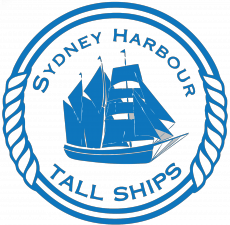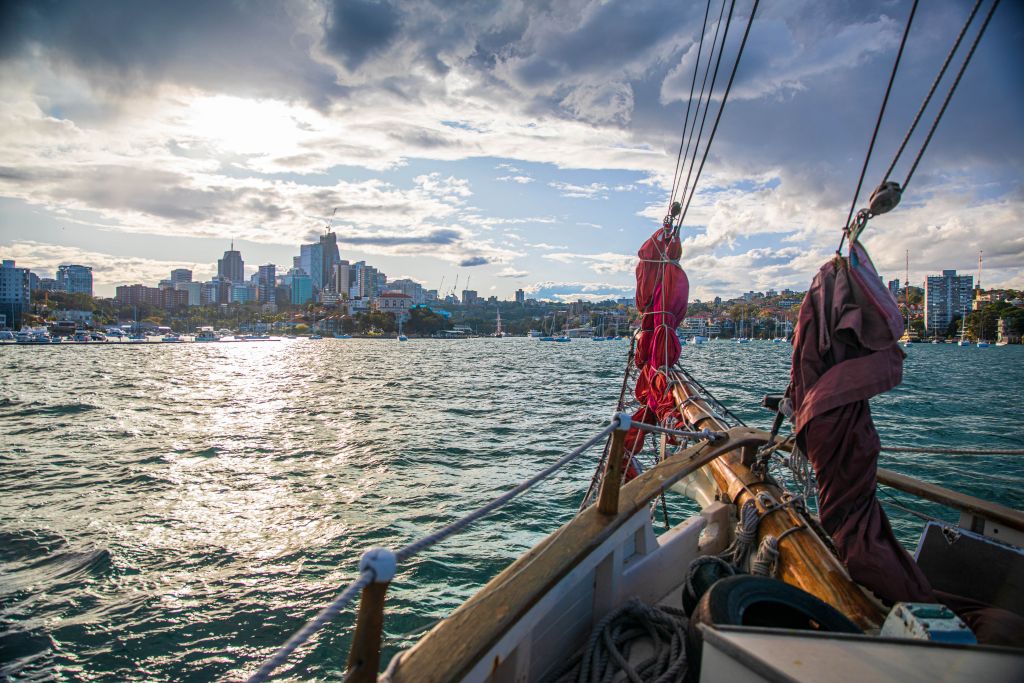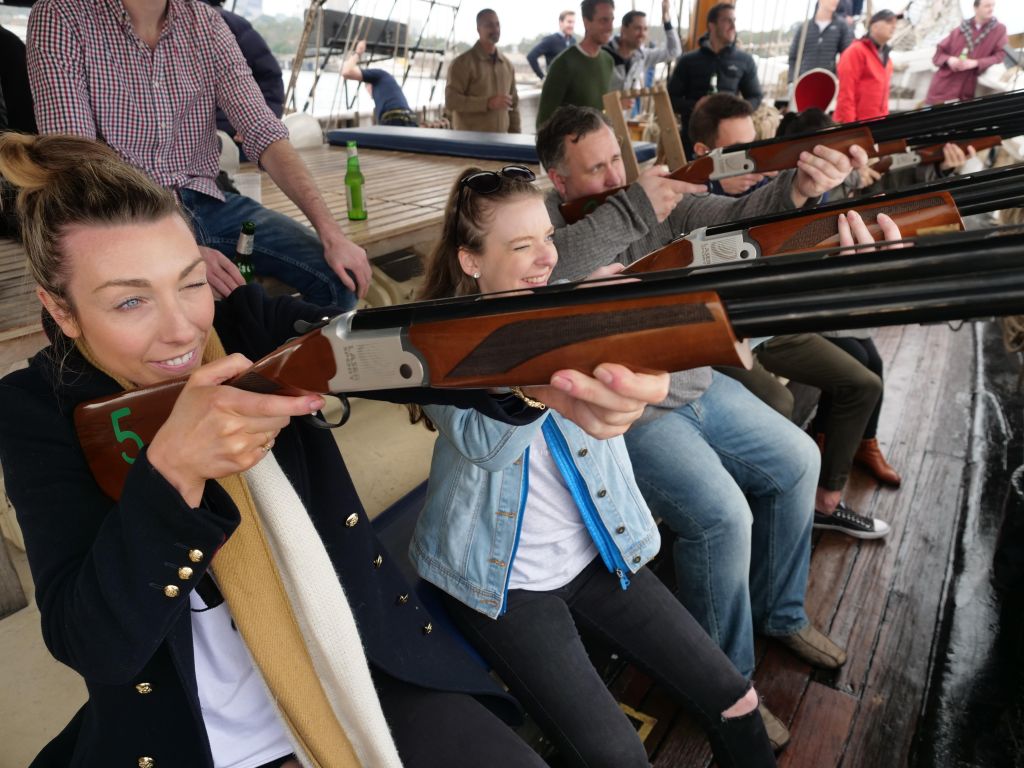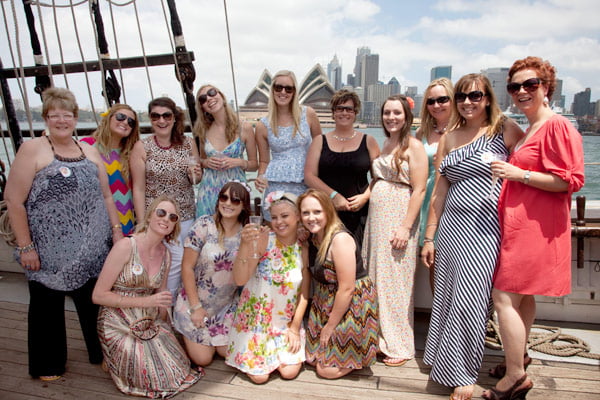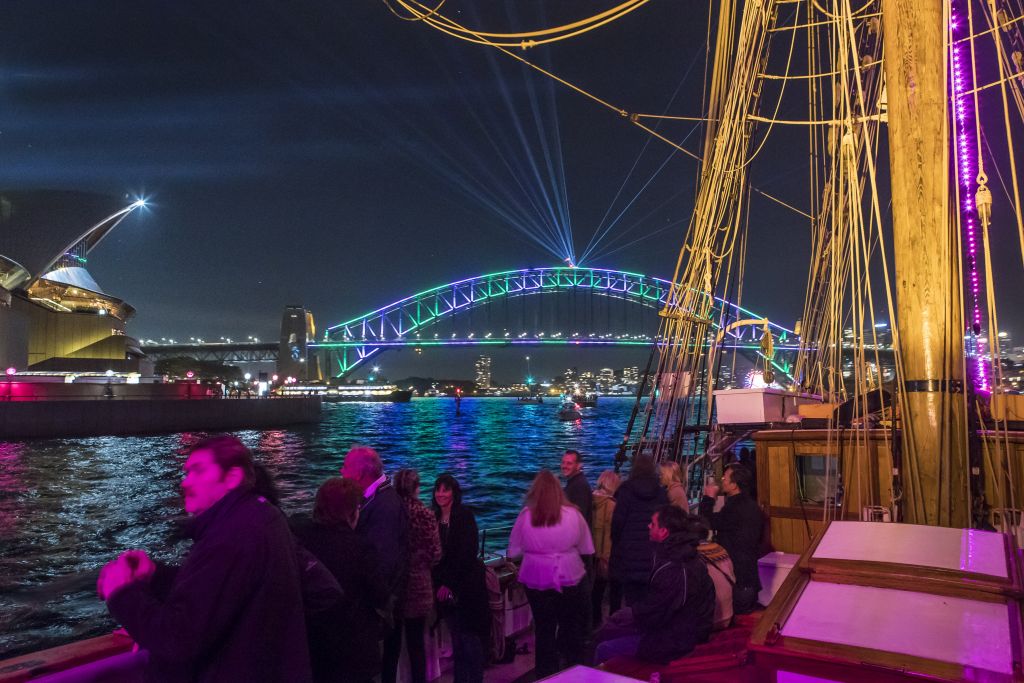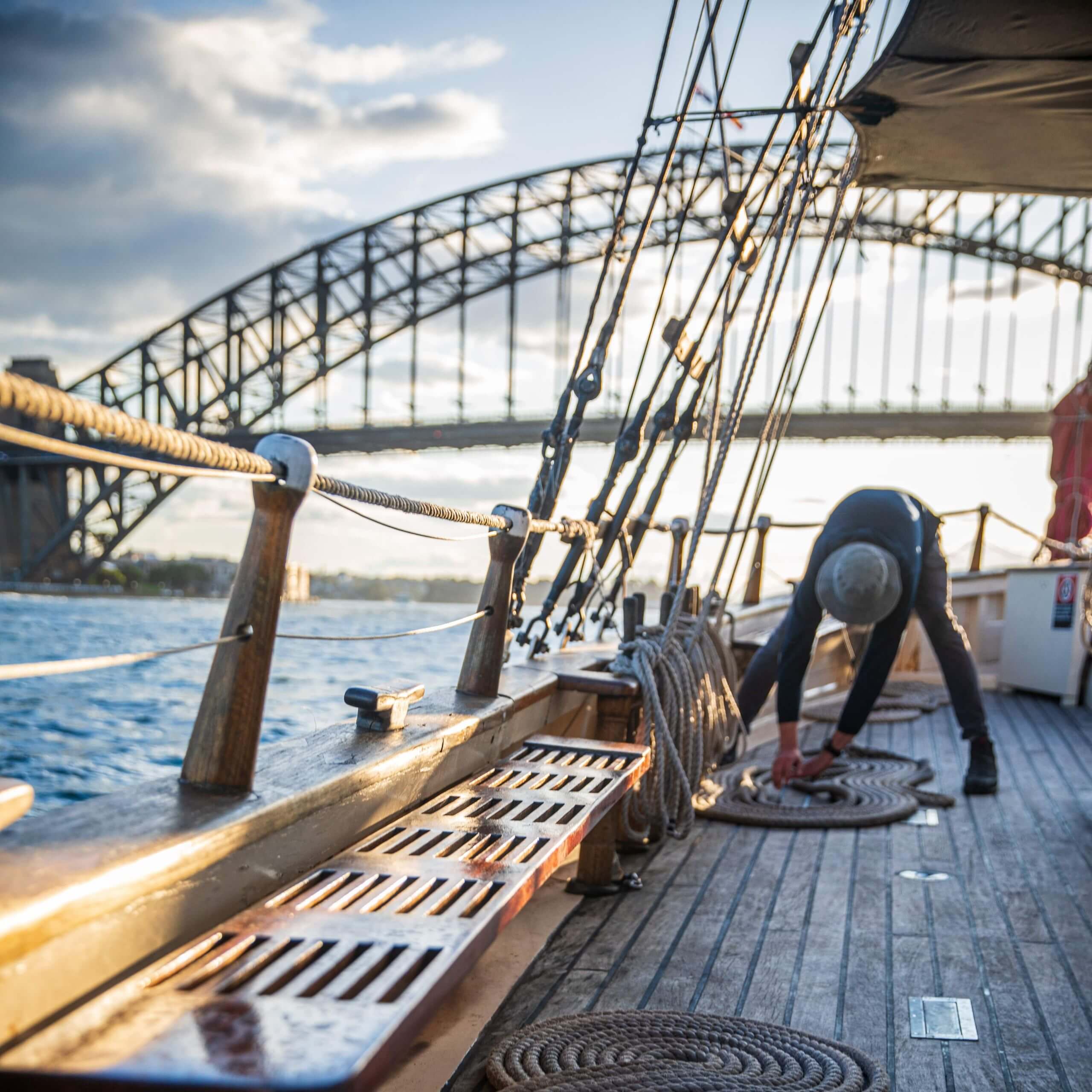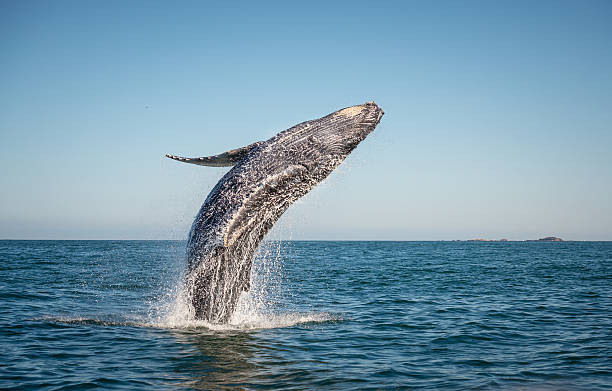
Sydney Tall Ships brings you the ultimate whale watching experience onboard our historic vessel, the Coral Trekker. You can either sit back and relax, or have a more hands-on adventure by climbing the mast, helping set sails, or learning the ropes having your full safety in mind.
With a licensed bar on deck, and activities and entertainment available on request, we give you a chance to view the giants of the deep sea up close and create unforgettable memories along the way.
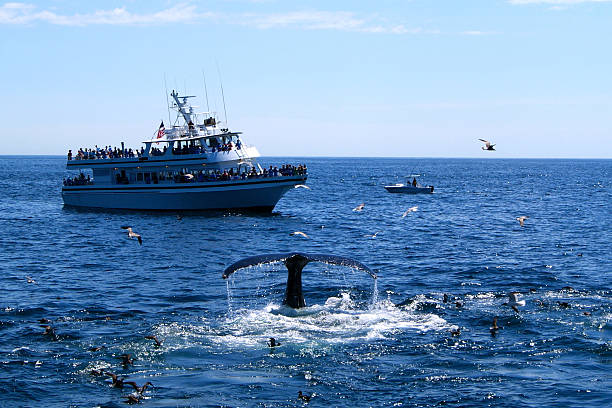
Spot Your Whales
You’re in for a treat if you’ve booked yourself any Sydney Harbour cruises between the months of May to November. Thousands of Humpback and Southern Right whales swim along the coastline and propel out of the water, giving you a wildlife spectacle like no other.
What Do Humpback Whales Look Like?
It’s easy to identify Humpback whales with their black/grey bodies and white patches underneath their bellies, pectoral fins, and tail flukes. The markers are unique to each whale like fingerprints are to humans. Scientists document the patterns to identify and categorize each individual creature and monitor their journey throughout life.
The flukes can grow up to 18 feet wide, and like their pectoral fins, have scalloped or serrated edges with pointed tips. Their heads, or rostrums, narrow down to be about 2.5m in size and are covered with bubble-shaped hair follicles called tubercles. These, along with the round protuberance on the tip of their lower jaw, and long flippers make it quite easy to recognize the species, even from a distance.
Humpback Whales are really playful and are often seen breaching the waters or slapping the surface with their pectoral fins and tails. You
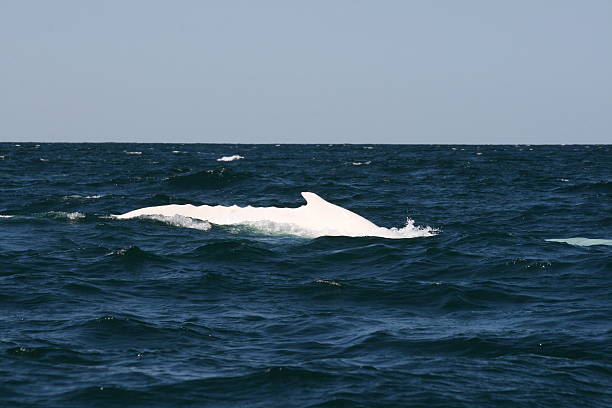
Keep an eye out for the Migaloo
Although mostly spotted in Queensland, the Migaloo has made some rare and special appearances in the waters of New South Wales. And if you’re in luck, you might get to witness Australia’s Humpback sweetheart during your short cruises from Sydney.
The Migaloo is an albino humpback with brown eyes and a white-pigmented exterior. With mixed opinions about his genetic mutations, scientists have yet to determine the true reason behind its hypo-pigmentation. It’s one of the four known white Humpback Whales.
What Do Southern Right Whales Look Like?
Southern Right whales have a blocky build, dark brown, grey, or black body, and white belly and chin patches. And like other Baleen whales, they have two blowholes that are shaped in a bushy ‘V’ and can reach up to 5m in height.
Southern Right Whales also have wide, paddle-shaped flippers and a broad head covered in white callosities forming individually identifiable patterns. But the easiest way to recognize this species is by their lack of dorsal fins.
Southern Right Whales are a bit of a show-off, exhibiting a variety of behaviors, such as breaching, lobtailing, flippering, and sailing. Don’t take your eyes off the water after they’ve taken a dive, as they’re more likely to come back up and do a few turns.
Different Whale Behaviours
For those interested in recording your whale watching experience on your harbour cruise in Sydney, here are the terms for different whale behaviors.
- Breaching: most of the whale’s body has left the area of the water. They do it to communicate, dislodge parasites, get a better way, or even just to play.
- Lobtailing/Tail Slapping: As the name suggests, it is when the whale lifts their tail up and smacks it back down
- Spy-hopping: This is when the whales lift their head up just enough for their eyes to be out of the water level
- Blowing: When whales spray out water vapor, air, and mucus into the air through their blowholes
- Pec Slaps: Whales sometimes lay on their slide and slap their pectoral fins on the water as a way to communicate
- Body Roll: Southern Right whales may stretch their bodies by sticking out their pectoral fins and rolling upside down to ignore hungry, demanding calves, or to approach a male for courtship.
Best Time to Spot Whales
While the best time to spot them is between mid-June to mid-July, the season officially begins in May. This is when whales begin moving along the coast to the warmer water of the Pacific to give birth. And the season ends in November when the whales start moving South during summer.
Don’t miss out on the opportunity to experience the Sydney Harbour in a new light on board our authentic square rigger vessel, the Coral Trekker. Get in touch with us to book your spots for the next harbour cruise Sydney adventure!
